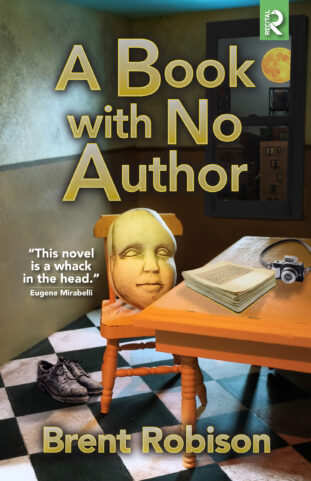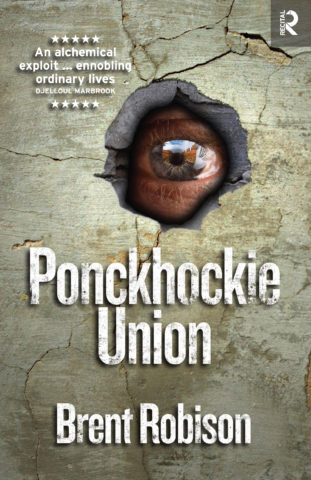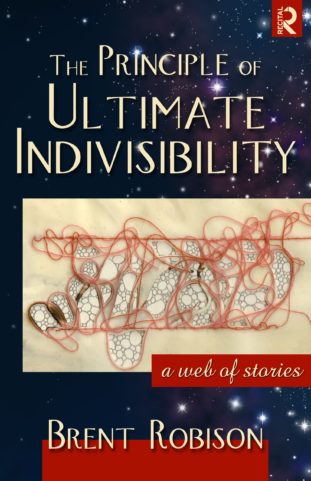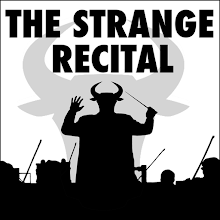This entry could be considered a follow-up to last year’s post, Aah, Memory... A Review of “And She Was” by Alison Gaylin. I hope you’ll read that one too.
“Can a stranger share your memories?” asks the blurb on the back cover of Alison Gaylin’s new(ish) suspense novel Into the Dark. For me that’s an intriguing question, a place from which to launch an investigation. So that’s what this post is: an investigation, not a book review.
I am addressing the same question in the novel I’m currently writing. But I’m approaching it from a very different angle.
Into the Dark’s recurring protagonist, private eye Brenna Spector, is blessed/afflicted with a rare condition called HSAM, or Highly Superior Autobiographical Memory (also called Hyperthymesia). When she encounters someone who seems to have knowledge of past events only Brenna or her missing sister could know, she is launched into a fast-paced whodunit with personal impact and an escalating body count.
SPOILER ALERT! Because this is a genre mystery, of course there is an explanation, and this one is both clever and surprising: a stolen diary. A filmmaker and his hired actress have managed to get possession of Brenna’s missing sister Clea’s teenage journal and are exploiting it for the sake of “art” (pornography, actually). And, a genius touch: the diary itself has a name, as if a person in its own right.
I love the rich questions and implications entwined in this plot: Does autobiography become fiction if authorship is claimed by someone not the author? Might it be legitimate for an artist to co-opt the private life experiences of a stranger (especially if that stranger is dead or missing)? Is this comparable to “found object” art? Or is it thievery because what is in question is not merely an object (a book), but the content found within, content whose value may be proportional to its private, personal nature?
If the diary were not “true,” would there be a crime? How can such truth be verified? Whose intellectual property is the diary of a dead person; who owns the copyright? If the crime is plagiarism, based on verbatim use of Clea’s writing, would it have been legal if altered, even if the core events remained the same? Legalities aside, where are the boundaries between ethics and art? Isn’t that what writers and filmmakers do all the time: rip off stories from people’s lives, tweak them a bit, put them out as art (“grist for the mill” and all that)?
What relationship to the “real” Clea does the actress have as she performs Clea’s private writings? If the actress is adopting a persona (Latin for “mask”), and the content of the persona is the intimate life memories of another person, who is really behind the mask? Might personal identity, the “self,” be actually nothing more than the book of memories we carry, the stories we tell ourselves and others about who we are?
Let us not forget: this entire story occurs only in the mind of Alison Gaylin, and subsequently, in the mind of the reader. Brenna is a fiction, whose fictional “memories” are the only place Clea exists. So Clea is something even less “real,” a fiction once removed, whose own “memories” (now twice removed, just a diary) are spoken by a fictional actress posing as someone not herself -- not even as a person, but as a book with a name. It becomes a spiraling fractal, a fiction-within-a-fiction-within-a-fiction. Speaking both metafictionally and metaphysically, this is a perfect metaphor for the illusory nature of “self”-- the Big Truth that every mystical tradition tells us in one way or another: “You” are simply an aspect of the Absolute, a single viewpoint in the One Consciousness. As Alan Watts puts it, “I” is just the Universe “eyeing.”
Yet, like characters in a novel, we must carry on, acting out our lives, fully engaged in our roles. The only thing we may have that imaginary characters don’t is awareness -- the capacity to hold both truths at once: our own Duality within Nonduality.
So, “Can a stranger share your memories?” Because it is masterfully true to its genre, a pop artifact embedded in a culture founded on mechanistic / materialistic philosophy, Into the Dark would answer “No.” The memories were not really shared, because there is a “real-world” explanation: a stolen diary. Mainstream mysteries need solutions; questions must have answers -- or so goes the conventional wisdom. I don’t necessarily agree. To my way of thinking, “mystery fiction” could more accurately be called “no-mystery fiction.”
That’s why I’m drawn to what is sometimes called the “metaphysical detective story,” ala Paul Auster’s New York Trilogy, in which answers never come. The real search is internal, for the seeker’s own identity. And in addition, external: a postmodern, metafictional exploration of the nature of authorship.
For me, questions are lovely: aromatic, enticing, delectable. They linger. Answers are pedestrian; they fall with a thud. Mysteries are rich, subtle, sweet. Solutions are just endings: “Done. Next!”
Granted, the reading public may not share this sentiment. So be it (sigh). Carry on.
Now… what if there were no pilfered diary at all, but one’s memories still appeared to be stolen by a stranger? In my novel-in-progress, that’s what happens. The question “Can a stranger share your memories?” might be answered, “Yes, but I can’t explain how it works; it’s a Mystery.”
Trouble is, I am also a product of this mechanistic/materialistic society (and I don’t love most science fiction or fantasy), so I want to have some sort of a foundation that makes sense to me. Fortunately, a combination of ancient philosophy and cutting-edge science begins to provide one. It goes like this: if my personal memories are not actually locked away inside my skull, like a little armored safe -- if instead they exist like television signals in the open air -- then maybe someone else, someone with just the right kind of mental “receiver,” can dial them in.
The latest book by controversial British biologist Rupert Sheldrake, Science Set Free, challenges the “10 Dogmas of Science.” Dogma Number 8 is “Memory is stored in material traces in the brain.” In an interview found here, he says:
In considering the morphic resonance theory of memory, we might ask: if we tune into our own memories, then why don’t we tune into other people’s as well? I think we do, and the whole basis of the approach I am suggesting is that there is a collective memory to which we are all tuned which forms a background against which our own experience develops and against which our own individual memories develop. This concept is very similar to the notion of the collective unconscious.He goes into more depth in The Sun Magazine, February 2013, interviewed by Mark Leviton:
Leviton: If, as you say, memory does not reside in the brain, then where is it? And can it survive the death of the individual to whom it belongs?For conventional science, an even harder problem to explain than memory is consciousness itself. Sheldrake’s Morphic Resonance theory may be supported by brain research conducted by physicist Sir Roger Penrose and anesthesiologist Stuart Hameroff. Their “Orch OR” model gives evidence for the non-local (that is, not confined to an individual brain) nature of consciousness. Extending that theory even further, here is the abstract of a paper called Quantum Consciousness co-authored by Hameroff and Deepak Chopra:
Sheldrake: “Where?” is the wrong question. Memory is a relationship in time, not in space. The idea that a memory has to be somewhere when it’s not being remembered is a theoretical inference, not an observation of reality. When I met you this morning, I recognized you from yesterday. There’s no photographic representation of you in my brain. I just recognize you. What I suggest is that memory depends on a direct relationship across time between past experiences and present ones. The brain is more like a television receiver. The television doesn’t store all the images and programs you watch on it; it tunes in to them invisibly.
It may sound radical, but this idea was put forward not only by Bergson [Henri Bergson, Matter and Memory] but also by philosophers Bertrand Russell and Ludwig Wittgenstein. They all challenged the notion that a memory has to be somewhere in the brain. The whole of the past is potentially present everywhere, and we access it on the basis of similarity. I think we’re tuning in not only to our own past experiences but to the memories of millions of people who are now dead — a collective memory. It’s similar to psychologist Carl Jung’s concept of a collective unconscious or Hinduism’s akashic records, which store all knowledge on another plane of existence.
Yes, there’s the potential for the memory to survive the death of the brain. Whether there’s survival of an individual’s memory, my theory doesn’t predict one way or the other. It leaves the question open, whereas the conventional theory is that, once the brain decays at death, all memories are wiped out.
The concept of consciousness existing outside the body (e.g. near-death and out-of body experiences, NDE/OBEs, or after death, indicative of a 'soul') is a staple of religious traditions, but shunned by conventional science because of an apparent lack of rational explanation. However conventional science based entirely on classical physics cannot account for normal in-the-brain consciousness. The Penrose-Hameroff 'Orch OR' model is a quantum approach to consciousness, connecting brain processes (microtubule quantum computations inside neurons) to fluctuations in fundamental spacetime geometry, the fine scale structure of the universe. Recent evidence for significant quantum coherence in warm biological systems, scale-free dynamics and end-of-life brain activity support the notion of a quantum basis for consciousness which could conceivably exist independent of biology in various scalar planes in spacetime geometry. Sir Roger Penrose does not necessarily endorse such proposals which relate to his ideas in physics. Based on Orch OR, we offer a scientific hypothesis for a 'quantum soul'.I enjoy this thick sciencey stuff, walking the murky borders of the unknown, although I get quickly lost trying to dig into the technical meat of it. One of the main points of this whole investigation for me, and one of the things that motivates all my writing, both fiction and non-, is touched on by this quote from Sheldrake:
So for materialists it’s a simple two-step argument. Memories are stored in brains; the brain decays at death, therefore, memories are wiped out at death. Whereas, if memories are not stored in brains then the memories themselves are not wiped out at death. They’re potentially accessible. That doesn’t prove they are accessed, that there is personal survival. It just means that’s a possibility, whereas with materialism it’s an impossibility. So one position leaves the question closed and the other leaves it open.Potential! Possibility! Whether we’re choosing among personal philosophies or approaches to scientific inquiry, I say let’s choose Open over Closed. How solid are scientific “facts,” anyway? I agree with Dean Radin, Ph.D., Senior Scientist at IONS, who says in his book, The Conscious Universe:
That scientific assumptions evolve should come as no surprise. One of the most profitable consequences of science as an "open system" of knowledge, as opposed to rigid dogma, is that the future Laws of Nature will bear as much resemblance to the "laws" we know today as the cellular telephone does to smoke signals.Okay, I seem to have wandered far afield from where I started. In Into the Dark, Alison Gaylin did her usual excellent job of keeping readers intrigued, tracking like bloodhounds the scent of an answer. I hope the story I’m trying to tell, currently titled Midnight at the Diner, can do something similar, keeping you rapt and curious, fully immersed in a question.
“Can a stranger share your memories?” Yes. And who knows what other amazing, marvelous things are possible in this infinite Universe?



.png)





